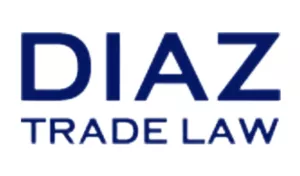It is important for companies to understand how China's intellectual property protections compare with those in the U.S. With the rapid increase in trade volumes between the U.S. and China over the past decade, protecting intellectual property has become an increasingly important policy priority.
U.S. Customs and Border Protection (CBP) has designated the protection of intellectual property rights (IPR) as a Priority Trade Issue (PTI). This means that IPR infringement represents a high-risk area that can cause significant revenue loss, harm the U.S. economy, and/or threaten the health and safety of the American people. CBP has focused its actions and resources around PTIs to better direct its trade facilitation and enforcement approach.
Despite the U.S. government's stated criticisms that China does not do enough to prevent the importation and exportation of counterfeit goods, the General Administration of Customs of the People's Republic of China (GACC) asserts that it has actively taken steps to protect legitimate trade while enforcing its IPR laws and seizing counterfeit goods. This article compares and contrasts various IPR enforcement and protection mechanisms used by both CBP and GACC.
Types of IPR Under U.S. & Chinese Customs Protection
While both the U.S. and China provide protection for trademarks and copyrights, the recordation of trade names with CBP is only available when the "name or trade style has been used for at least 6 months." Neither domains nor trade secrets are enforced by CBP or GACC, and patents are rarely enforced by GACC, and only enforced by CBP when an exclusion order is issued by the International Trade Commission.
Practice Tip: The search engines to determine whether others have recorded their IPR with the GACC are the GACC database and the China National Intellectual Property Administration's (CNIPA's) database. It should be noted that the CNIPA's official database is not always timely updated. It is best practice to have counsel review the search results and provide a professional opinion on the likelihood of success of registration, prior to proceeding with the registration. In the U.S., the search engine to determine whether others have recorded their IPR is the Intellectual Property Rights Search (IPRS).
IPR Recordation
IPR recordation refers to the process in which companies record their registered trademark or copyright. By recording IPR with a customs agency, the IPR enforcement process can be facilitated. Both CBP and GACC offer IPR recordation systems. While not compulsory, the recordation of IPR is highly advisable. In the U.S., IPR protection is offered via the recordation process (discussed further below), in which companies partner with CBP to prevent counterfeit products from entering or exiting the U.S. Recordation protections include in-transit goods that are transiting through the U.S. Publicly available CBP IPR seizure statistics do not distinguish between seizures of imports versus exports.
Practice Tip: In China, companies should record their IPR as early as practical and in the broadest terms possible. The sooner the IPR is recorded, the less likely the IPR will already be covered by another party in that country. The broader the terms are, the wider the protection afforded to the IPR.
It is recommended that companies record IPRs for the following reasons:
Benefits of IPR Recordation with GACC
- Recordation will enable GACC to take action against the suspected infringing goods
- The recordation is not subject to official government fees
- Infringers may be deterred by the recordation and the owners' vigilance and refrain from exporting or importing infringing goods
- Without an IPR recordation, the detention period will be much shorter, namely, 20 working days, as opposed to 50 working days
- The recordation can bring the IPR to the attention of GACC officials and increase the likelihood of seizure
Benefits of IPR Recordation with CBP
- CBP will monitor and seize infringing merchandise at all 328 ports of entry so that the trademark or copyright holder does not have to locate and prosecute every unauthorized importer, distributor, and retailer illegally using its trademark or copyright.
- CBP has the authority to seize counterfeit merchandise and thereafter issue monetary fines against anyone who facilitates the attempted introduction of counterfeit merchandise into the U.S.
- CBP may go to the U.S. Attorney's Office and request that those involved in the illegal activity be criminally prosecuted under the Trademark Counterfeiting Act of 1984.
- A recordation is subject to minimal fees:
- $190 per International Class of Goods (IC), per trademark registration
- $190 per copyright
- A recordation can be renewed for another term for the fee of $80 per International Class of Goods (IC) for trademarks, and $80 per copyright.
- A recordation will remain in force concurrently with the underlying registration.
- A recordation may be filed online with CBP's IPR e-Recordation online system, and searchable via the Intellectual Property Rights Search (IPRS) database.
Practice Tip: The U.S. and China both require IPR (trademark and copyright) to be registered prior to having the ability to receive protection from their customs agencies. In the U.S., registration of a trademark must be made with the U.S. Patent and Trademark Office (USPTO) and copyright with the U.S. Copyright Office (USCOP). CBP does allow an application to record a pending copyright registration for a period of 6 months by providing proof that you have filed an application with the USCOP.
Similarly, China only protects IPRs registered with the relevant Chinese government authorities, it is highly advisable to apply for the registration or grant of copyrights, and trademarks before requesting GACC protection or recordation. If the intellectual property does not have the correct registration or is otherwise not granted appropriate IPR protection, then the intellectual property cannot benefit from either customs agency's protection.
Inbound vs. Outbound IPR Protection
China and the U.S. enforce IPR both for importations and exportations. In China, the protection is based on the condition that the relevant IPR has been granted registration or approval by the relevant Chinese authorities. Pending or not-applied- for IPRs usually enjoy no protections. In 2020, the outbound infringing goods seized by the GACC accounted for 99% of the total, namely 61,300 outbound batches as opposed to 614 inbound batches.
The GACC has protected the lawful interests and rights of over 1,000 IPR owners of about 45 countries, which reflects China's strong commitment to IPR protection. CBP publishes annual IPR seizure statistics, but, does not differentiate import from export seizures. In FY 2020, ICE-HSI arrested 203 individuals, obtained 125 indictments, and received 98 convictions related to IPR crimes. In FY 2020, there were 184 million express shipments and 356 million international mail shipments, and over 90 percent of all IPR seizures occur in the international mail and express environments. The total number of seizures by CBP in GY 2020 were 26,503, with an estimated MSRP of $1.3 billion.
Click here to continue reading . . .
The content of this article is intended to provide a general guide to the subject matter. Specialist advice should be sought about your specific circumstances.


